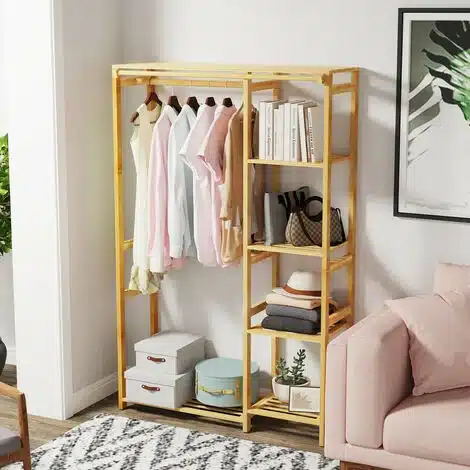When you imagine a library, you probably conjure the image of a large, grand room filled with old wooden bookshelves, antique furniture, and soft, warm lighting. However, today’s interior design trends are steering more towards modern minimalism, even in the historical homes’ libraries. This design philosophy emphasises the simplicity of form, space, materials, detailing and colour. So, how can you incorporate this aesthetic into your library design while preserving its historical charm?
Modern Minimalist Design Elements
Before we dive into the specifics of integrating modern minimalist elements into your library, let’s briefly outline what this design style entails. Minimalism in interior design means using only essential elements such as simple furniture, clean lines, and natural lighting. It aims to create a space that is efficient, calming, and uncluttered.
Also to discover : How to Design a Solar-Powered Water Feature for an Eco-Friendly Garden?
The modern minimalist design places a high premium on functionality and simplicity. It often embraces monochromatic or restricted colour schemes and avoids excess decoration or accessories. The central idea is that less is more.
Furniture Selection and Arrangement
The first thing to consider when implementing modern minimalism in your library is your furniture selection. Traditional libraries often have heavy, ornate furniture, but the minimalist design calls for something cleaner and simpler. Opt for furniture with clear lines and basic shapes.
Also to read : How to Design a Space-Saving Guest Sleeping Area in a Home Office?
Instead of high-backed leather chairs and intricately carved tables, you might choose low-profile seating and sleek, simple tables. You can still use wood as it gives warmth and texture to the room, but try to stick to pieces with a more modern aesthetic. Keep in mind that while the furniture should be minimalist, it should still be comfortable and functional, ensuring you’ll enjoy spending time in your library.
Wall Design and Decor
In a minimalist design, the walls of your library should be as simple and clean as possible. A fresh coat of paint in a neutral color like white or gray will immediately give the room a more modern feel.
Photo frames and other wall decor should be kept to a minimum. Instead of an expansive gallery wall, consider a single piece of modern art or a monochrome print to keep the room feeling neat and clean. You could also consider built-in shelves painted in the same color as the walls for a sleek, cohesive look.
Also, try incorporating a little bit of your home’s history on your walls. It could be a black-and-white photo of your house when it was first built or a painting of the original homeowners. This will add a touch of charm and ensure that your library remains connected to the rest of the historical property.
Lighting and Space
Lighting plays a crucial role in modern minimalist design. Use natural light as much as possible to keep the room bright and airy. Large windows or skylights can help accomplish this, but if these are not feasible, consider adding recessed lighting or simple, modern fixtures.
Try not to clutter the room with too many light fixtures. Instead, strategically place a few fixtures to highlight your books and create a warm, inviting space. The goal is to create a well-lit, open space where you can easily navigate and find your books.
Storage and Organization
Finally, consider your storage and organization solutions when designing a minimalist library. Modern minimalism thrives on functionality, so your bookshelves should be practical and efficient.
Try out modern shelving options such as floating shelves or modular units. You can even have a wall of built-in shelves for a streamlined look. Avoid ornate bookcases or those with complicated designs. Remember, the goal is to keep everything simple and neat.
For smaller items like pens, notebooks, and other office essentials, consider using minimalist storage boxes or baskets. These can be tucked away in cabinets or on shelves to maintain the clean look of your library.
Incorporating modern minimalism into a historical home’s library can be a fulfilling project. It combines the charm and character of a bygone era with the clean, simple beauty of contemporary design. Whether it’s through carefully selected furniture, understated wall decor, strategic lighting, or efficient shelving, you can create a library that’s both functional and stylish. Each design decision you make should contribute to an atmosphere of calm and focus, making your library the perfect place to curl up with a good book.
Modern Minimalist Home Office in the Library
A historical home library can also transform into a modern minimalist home office. This transformation can be achieved while keeping the original essence and allure of the historical setting. To begin with, the selection of a freestanding desk plays a significant role in setting the mood. A sleek, simple freestanding desk made from materials such as glass or polished wood can establish a minimalistic tone.
When incorporating a workspace into your library, remember to focus on functionality. Equip your desk with the necessary devices and office essentials. Use minimalist storage boxes or baskets to store smaller items like pens and notebooks. This will maintain the clean, uncluttered look that is the hallmark of modern minimalism.
Lighting is an essential factor in creating a conducive work environment. The use of natural light is paramount but supplement it with modern fixtures for those late-night work sessions. For example, a simple desk lamp can provide focused light, reducing strain on your eyes. Moreover, remember to include outdoor lighting if you have a view of a garden or a yard, as this can add a calming influence to your workspace.
Hardwood floors can also enhance the look of your minimalist home office. Simple, polished wood floors create a clean, sleek aesthetic that complements the minimalist design. Furthermore, they provide a warm, inviting feel to the room, making it an ideal place for both reading and working.
Transforming Other Spaces Into a Minimalist Haven
Transitioning your historical home library into a modern minimalist space can inspire you to transform other areas of your home in the same vein. You can extend the minimalist aesthetic to your living room, kitchen, dining area, and even your bathroom.
In the living room, strip down your decor to essential pieces. Choose furniture with clean lines and neutral colours, similar to what you did in your library. Use a monochromatic or restricted colour palette and avoid excessive decoration or accessories. Instead, focus on a few carefully selected pieces that add character to your home.
The kitchen and dining areas can also reflect modern minimalism. For instance, replace ornate kitchen cabinets with ones with straight lines and simple handles. Opt for a sleek dining table, and pair it with modern, minimalist chairs. Having the kitchen and dining area in similar minimalist styles creates a seamless aesthetic flow in your home.
Bathrooms are typically small spaces, so they can greatly benefit from minimalist design. Opt for sleek bathroom vanities with simple, clean lines. Keep the colour palette neutral and the designs simple. For instance, a white freestanding bathtub can be both functional and aesthetically pleasing.
Conclusion
Incorporating modern minimalism into a historical home’s library and extending it to other parts of your home can be an exciting and gratifying project. The key is to use minimalist design principles to enhance the existing historical charm, not overshadow it. The result is a home that beautifully combines the character and grandeur of a bygone era with the simple, streamlined beauty of contemporary design.
By following the principles of modern minimalism – functionality, simplicity, and a focus on essential elements – you can transform your historical home library into a stylish, efficient home office. By extension, you can bring the same aesthetic to your living room, kitchen, dining area, and bathroom, creating a harmonious, minimalist haven.
Whether you’re reading, working, dining, or relaxing, you’ll do so in spaces that are not only practical and functional, but also visually pleasing and serene. In the end, isn’t that what we all want from our homes?











